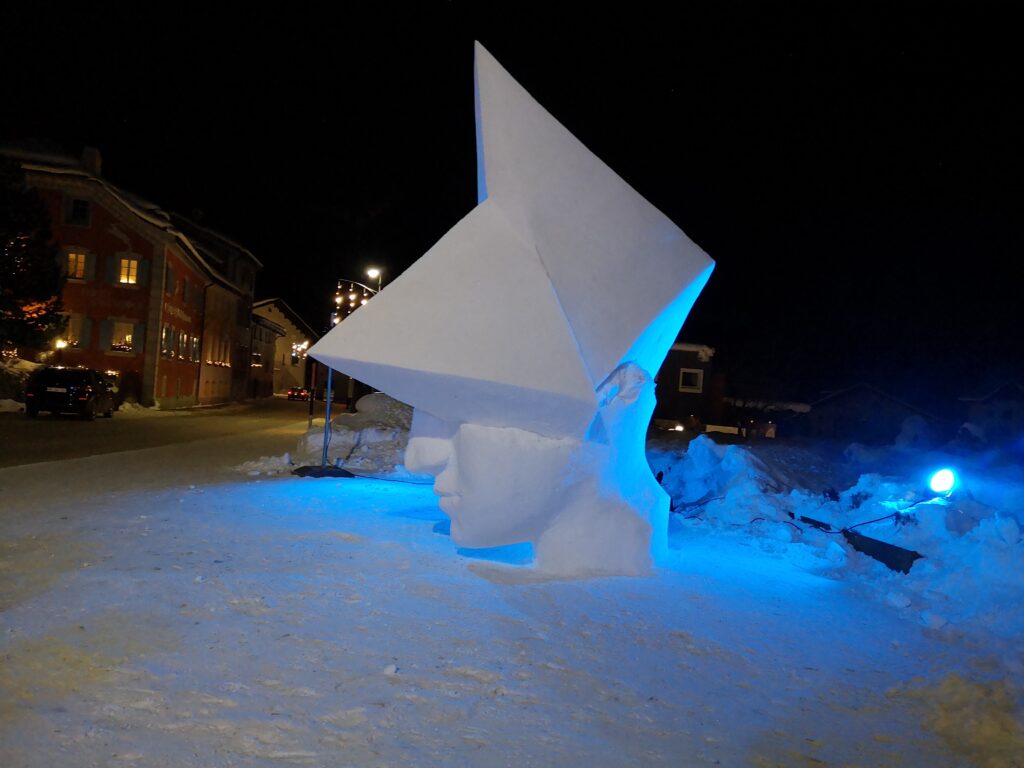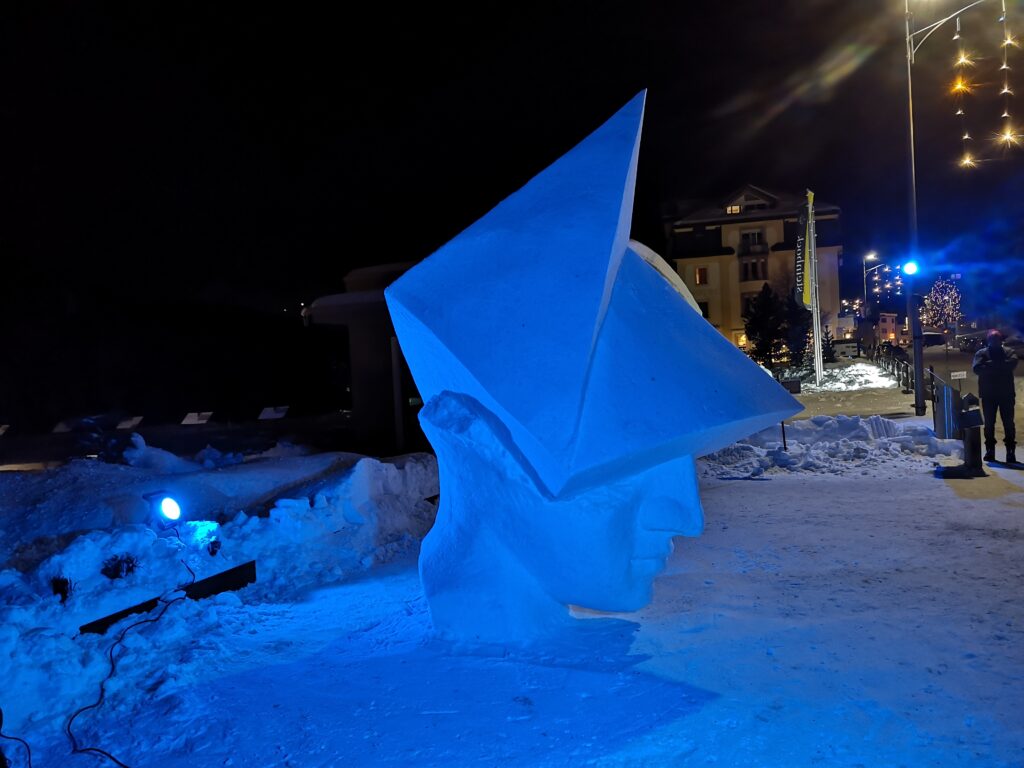






Snow Art Festival Pontresina winter 2021.
La Bella figura di Hermes polyhedral.
Nieve.
cm 300*250*350h.
2021.
Ayuntamiento de Pontresina, Suiza.
Una expresión coloquial que vincula la belleza con los modales, pero también con la cortesía, el lenguaje, el gesto y la adecuación, este es el concepto detrás de “Fare Bella Figura”.
Literalmente, significa “hacer una buena figura”, traducible como “dar una buena impresión”, “ser / hacer algo apropiado”, pero también comprar / vestir / cocinar y hacer cualquier acción “para ser apreciable “.
El origen de la expresión es bastante ambiguo. Según el “Dizionario dei Modi di Dire” (Hoepli Editore), puede provenir de un comentario del Rey Carlo Felice di Savoia: “Cuando salgo con mi entrenador, no quiero [dar la impresión] miro como [un / el] chocolatero! “. Este comentario implica que, el Rey, no quiso parecerse a la “figura” del empresario, refiriéndose, entonces, a su apariencia. Por tanto, “Fare Bella Figura” está estrictamente ligada a visualizar, ver y aparecer.
Parece que, para “Fare Bella Figura”, necesitas verte desde fuera, como un alter ego. Entonces, toma este ser y haz lo mejor que puedas para que se vea, sea y actúe de manera admirable, como una “bella figura”, “una bella figura”.
Como país de la “belleza” (en palabras de Gibrans), Italia hace de su lenguaje un código que observa formas, formas, armonías y tonos, pero, al principio, observa su figura de rey, como Carlo Felice di Savoia, quien, por su orgullo, acuñó una expresión que es una historia, una historia figurativa.
Giosuè Prezioso.
El poliédrico de Hermes es una propuesta de gran formato que tiene sus raíces en la tradición clásica, haciendo referencia directa a las culturas griega y romana, e inspirándose en su historia y mitología. Su estilo parte de la tradición clásica, pero introduce un toque posmoderno al truncar deliberadamente los miembros, que en las obras clásicas es el resultado de las vicisitudes que han sufrido a lo largo del tiempo.
De la misma forma, introduce cuerpos geométricos inspirándose en la geometría clásica. Los poliedros son cuerpos geométricos cuyas caras son planas y contienen un volumen finito. La palabra poliedro proviene del griego clásico πολύεδρον (polyedron), de la raíz πολύς (polys), “muchos” y de έδρα (edra), “base”, “asiento”, “cara”. Una combinación en la que el profundo valor de lo clásico se mezcla con la geometría a través de la poética.
Snow Art Festival Pontresina winter 2021.
La Bella figura di Hermes polyhedral.
Snow.
cm 300*250*350h.
2021.
Municipality of Pontresina, Suiza.
A colloquial expression that links beauty with manners, but also with politeness, language, gesture, and appropriateness, this is the concept behind “Fare Bella Figura”.
Literally, it means “to make a good figure”, translatable as “to give a good impression”, “be / make something appropriate”, but also to buy / to dress / to cook and do any action “in order to be appreciable “.
The origin of the expression is quite ambiguous. According to the “Dizionario dei Modi di Dire” (Hoepli Editore), it may come from a comment made by the King Carlo Felice di Savoia: “When I go out with my coach, I do not want [give the impression] I look like [a / the] chocolate-maker! “. This comment implies that, the King, did not mean to resemble the “figure” of the entrepreneur, referring, then, to the way he looked like. Therefore, “Fare Bella Figura” is strictly linked to visualizing, seeing, and appearing.
It seems that, in order to “Fare Bella Figura”, you need to see yourself from the outside, as an alter ego. Then, take this being and do your best in order to make him / her look, be and act in an admirable way, as a “beautiful figure”, “una bella figura”.
As the country of “beauty” (in Gibrans’ words), Italy makes of its language a code which observes forms, shapes, harmonies and tones, but, at first, it observes its figure as a king, like Carlo Felice di Savoia, who, because of his pride, coined an expression which is a story, a figurative story.
Giosuè Prezioso.
Hermes polyhedral is a large-format proposal that has its roots in the classical tradition, making direct reference to Greek and Roman cultures, and taking inspiration from their history and mythology. His style stems from the classical tradition, but introduces a postmodern touch by deliberately truncating the limbs, which in the classical works is the result of the vicissitudes they have suffered over time.
In the same way, it introduces geometric bodies taking inspiration from classical geometry. Polyhedra are geometric bodies whose faces are flat and contain a finite volume. The word polyhedron comes from the classical Greek πολύεδρον (polyedron), from the root πολύς (polys), “many” and from έδρα (edra), “base”, “seat”, “face”. A combination in which the deep value of the classic is mixed with geometry through poetics.





